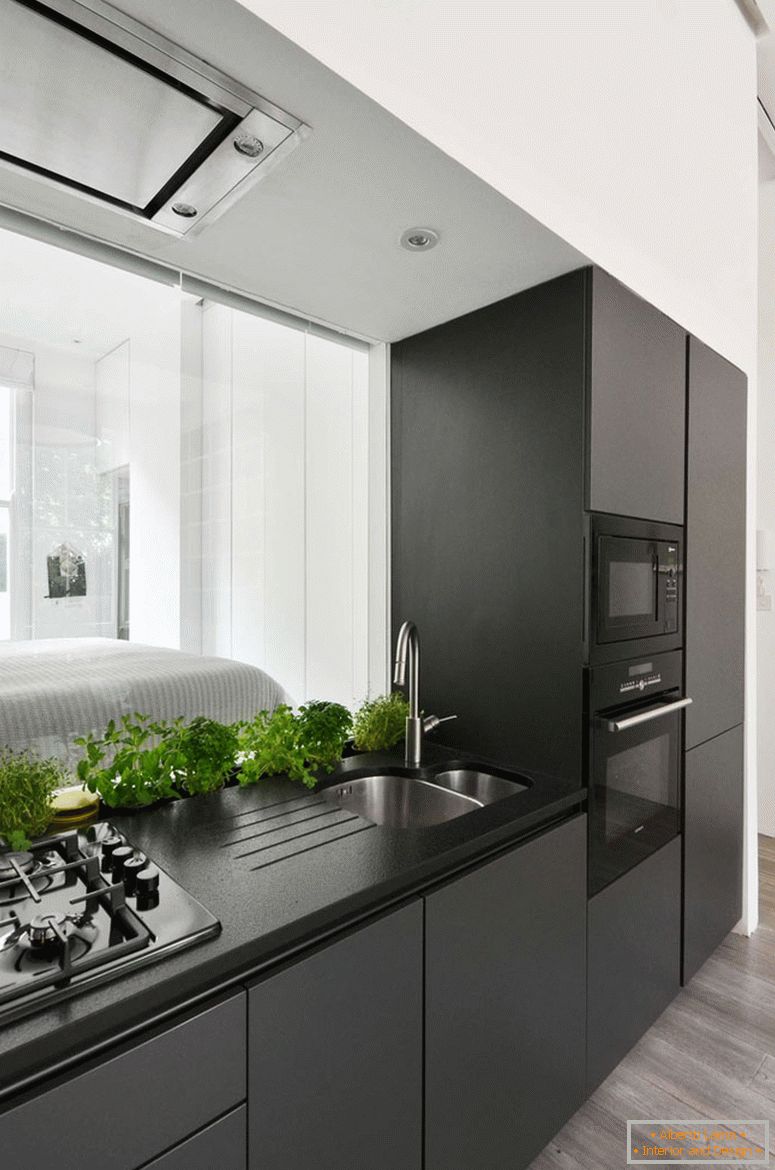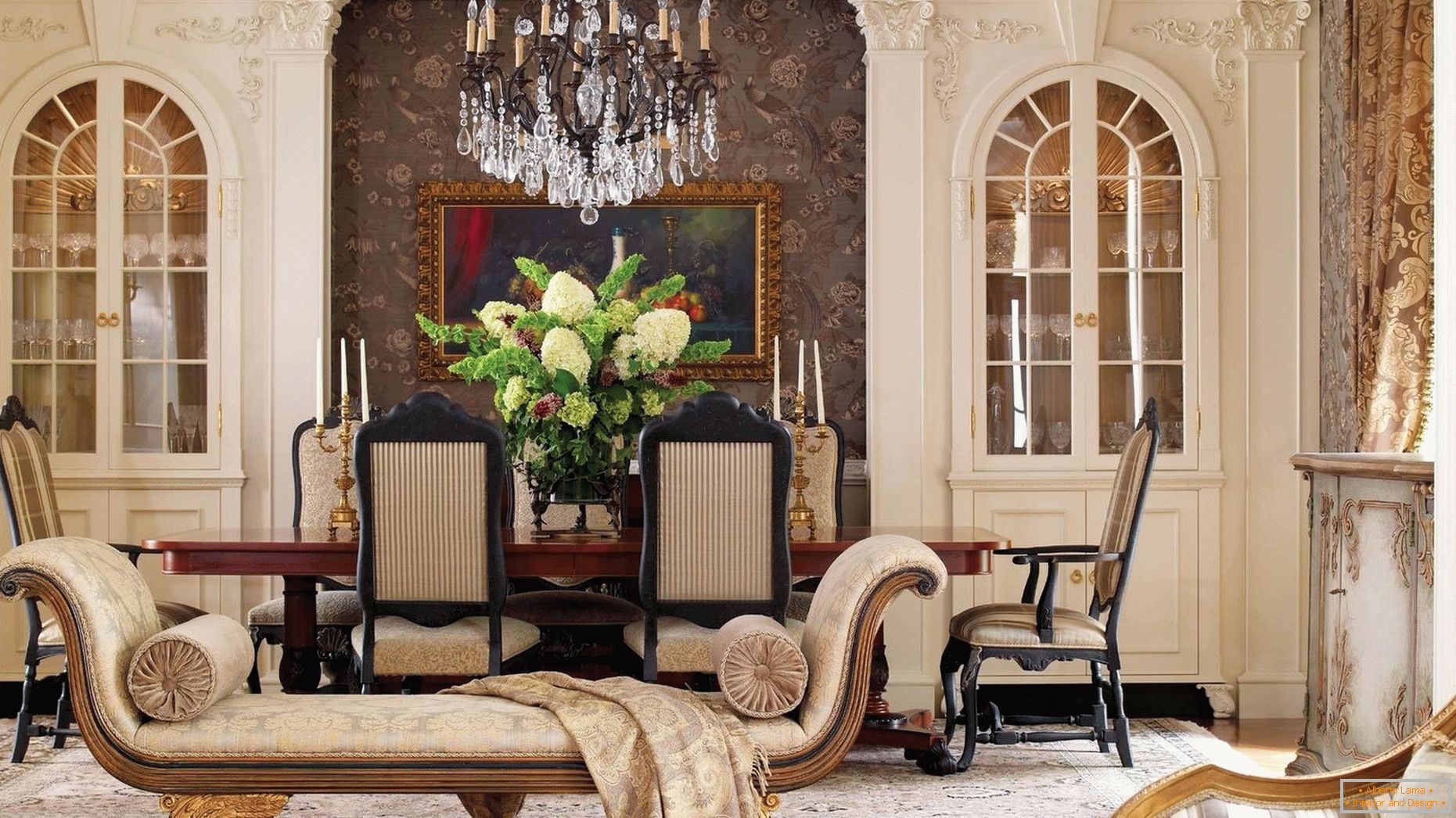
Classicism is a direction in architecture and design, the birth of which dates back to the beginning of the XVII century. Style has remained relevant in Europe for almost two centuries. Gradually, the main ideas of classicism spread beyond the Old World to New, where the colonialists mixed them with local ethnic motives, turning them into a colonial direction. Style refers to the elite, its most accurate definitions are the epithets "royal", "palace". Classicism is difficult to translate into a modern interior, which tends to laconism and rationality. Luxury, refinement, prosperity - the main features of the direction, which in the age of technological progress may seem hopelessly outdated. Let's consider in more detail how to correctly use classicism in the decoration of the room in such a way that the design, having references to the past, was relevant for our days.
The most popular direction was in Germany (Berlin, Munich), Russia (St. Petersburg), Poland (Warsaw), Scotland (Edinburgh) and France. The latter skillfully combined the "sweetness" of the rococo with the logic of classicism. Most examples of style in architecture became standards, that is, classical monuments: the Arc de Triomphe (Carrousel), the lesser known eponymous building in Rome (Septimius Severa), the Vendome Column, the Pantheon (Saint Genevieve), the Marble, Petrovsky, Tavrichesky Palaces, the Academy of Arts, Admiralty (St. Petersburg).

Empire - an imperial style, the brainchild of high classicism, whose history took another turn during the reign of Napoleon. In the interiors the direction showed itself rather weakly, but it was reflected in the sculptural ensembles (especially in the monuments of military prowess).

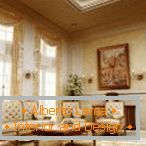


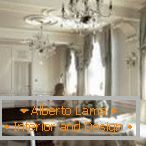
Main characteristics
Classicism has a number of interior features that make it possible at first glance to recognize the identity of the design to a particular stylistic group. They include:
- Draperies made from natural, luxurious fabrics (mostly silk). Usually they are adorned by a discreet, reserved, but no less rich pattern.
- Elegant stucco, paintings on the walls, tapestries, instead of paintings.
- Long, narrow windows. In modern interiors use panoramic models that allow you to leave the house on the terrace or from the apartment to a glassed balcony. Shield them with heavy curtains on podhvaty. Dense fabric is best combined with high ceilings, so classicism is ideal for spacious "palace" rooms.
- Antique columns with capitals, friezes, festons, rosettes, meanders, mirrors, multi-tiered chandeliers of expensive crystal as the main decoration of the room.
- Furniture from an expensive solid wood of valuable species.
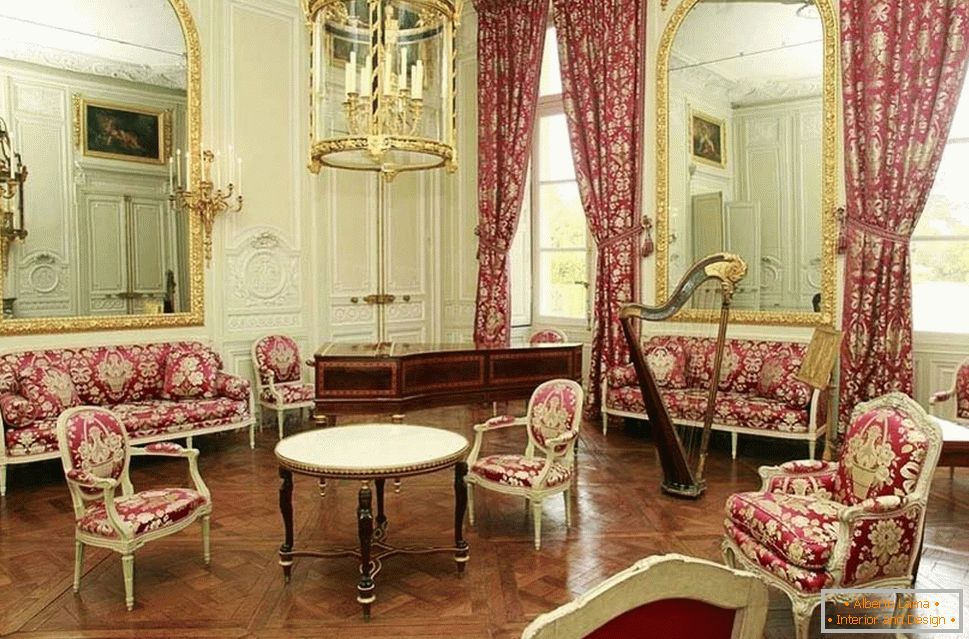
Classicism is characterized by an abundance of luxurious, rich details, but they are devoid of a touch of pretentiousness, do not look too bright and bright. Perhaps the reason was the principle of symmetry, which is used in all interiors and makes luxury balanced.

Columns in classicism lost their actual function and became only decor. They do not refer to load-bearing structures, as in the antique style, and therefore they are mainly made of light materials.
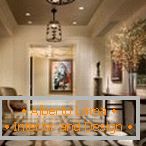
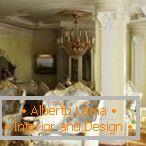
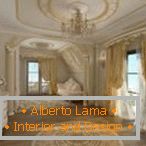

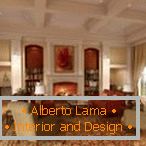
The color scheme used in style
In interiors, white or one of its color options is necessarily used. Its dosage depends on the function and dimensions of the room. In larger rooms you can use dark cinnamon colors: rich walnut, mahogany, rich chocolate, soft sand color. In small rooms, you should stay on beige, cream or coffee with milk, which has long become a classic. Also used are soft shades of pink, green, blue, yellow and less often lilac. As a rule, three colors are combined: a light background (white, milky, pearl, ivory), a pastel base of shades of similar shades (usually brown) and a relatively bright accent.
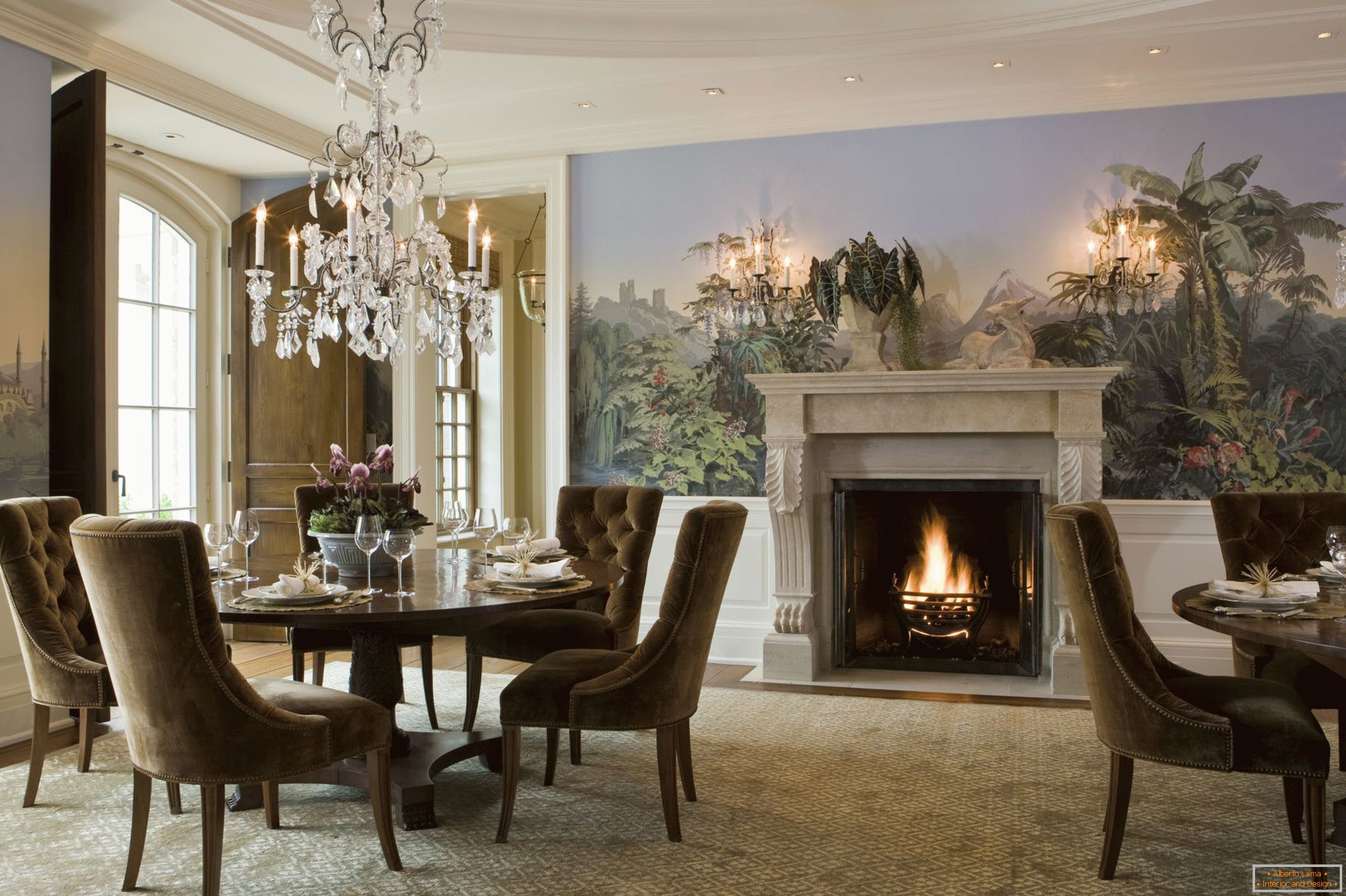
Do not recommend choosing flashy accent colors. Brightness in the understanding of the man of the era of classicism is very different from the juicy, neon shades, which our contemporaries are accustomed to.
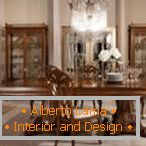
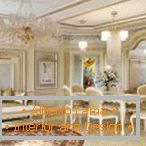

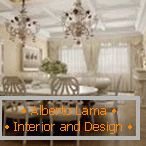
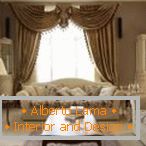
Textiles & decor
Decor and furnishings are made of natural materials. If it is necessary to accurately imitate the interiors of the era of classicism, then they acquire objects of manual work. The curved, complex lines characteristic of Baroque and Rococo are replaced by simple "straightforwardness" and smoothness. Particular attention is paid to mirrors and reflective surfaces. The "glitter" of a lot of light bulbs in massive chandeliers emphasizes the respectability of the apartments. Wooden surfaces are partially decorated with carvings, solely for the sake of adding grace to the setting. On the walls hang tapestries (carpets with woven patterns), paintings in massive gilded frames. An obligatory element in the living room and bedroom is the fireplace. On the shelves put vases, porcelain and a small sculpture. Furniture and decor decorate with inserts of rare wood, gilding, silver, brass, silk, velvet deep shades, inlaid. Textiles are used exclusively natural. The lightest, most luxurious and most common material in classicism is silk. Mother-of-pearl overflows of its surface will make the atmosphere restrained, but incredibly elegant. Silk is followed by velvet, satin, muslin and cambric.

A wall carpet or a miniature painting can be made by yourself, if you are fond of embroidery. To do this, you need to take a hoop, a needle with a wide eyelet, an ordinary canvas and a string of mulina folded several times. Embroider the picture with a tapestry suture, which is a diagonal "half" from the classic cross.
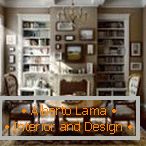
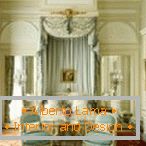
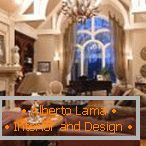


Lighting
The emphasis in the interior is on the central lighting, represented by a grandiose ceiling chandelier. It usually has such impressive dimensions and is executed so gracefully that it becomes one of the main decorative elements in the room. As a supplement, we use local table lamps and sconces. Decorate them, as a rule, with crystal, glass or transparent stone (in luxurious versions). Also, the use of fabric bubbles is allowed. In neoclassicism, you can use a spot-lit LED white light in order to emphasize the winning details of the situation.
Read also: Design of a bedroom in a classical style - photo ideas of an interior 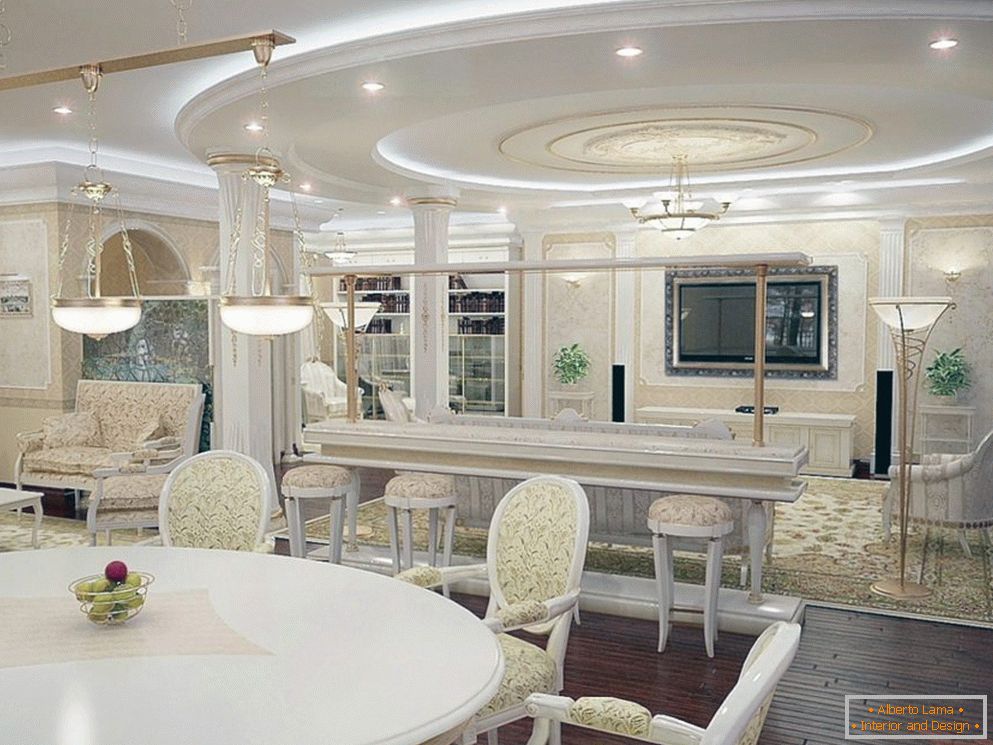
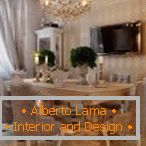

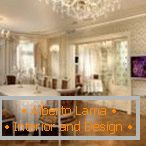
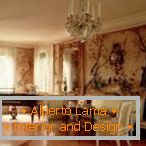

Materials and methods of finishing
The walls are painted and then painted or wallpapered. In this case, it is better to choose the fabric that will most correspond to the era. Preference is given to shades of light, and the ornament should not be too florid. Alternatively, the walls can be draped with silk or covered with wooden panels. In addition, the surface is decorated with columns or "deceptions" - pilasters. The original solution will be a painting in the style of grisaille, which is painted with different colors within the same color (usually gray). In this technique, not only the walls, but also the ceiling are decorated. For a floor covering choose a parquet. If the budget allows, then you can buy a luxurious version with a unique pattern with dial-up modules from natural wood. In the kitchen, in the dining area, the bathroom floor can be covered with ceramic tiles, claydite or mosaic. The ceiling is selected matt tension or trim plaster. Alternatively, you can use satin or silk drapery. In the finish of the floor sometimes used marble light colors with a discreet drawing. High walls can not be fully decorated with a natural stone because of its weight.

In neoclassicism ("modernized" style) it is permissible to use laminate, since such interiors do not claim to be authentic.

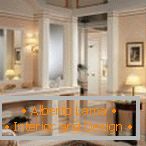



Classicism in the interior
Classicism can be embodied in every room of the house or combined with other directions close in spirit. These include Rococo, Baroque, Empire, Classics (in the broad sense), the colonial style. The first two options will contrast with the restraint of the main direction, and the rest will be based on the principle of analogy. Neoclassicism is well combined with another modernized style - neoclassicism.

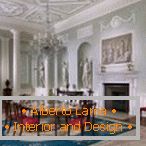
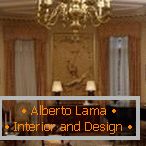
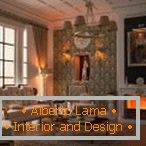
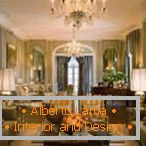

The hallway and the corridor
In the design of the hallway, as a rule, use light shades (milk, white, cream, beige). Since the corridor usually has an elongated shape, it can be visually expanded by a combination of a monochrome finish at the bottom and fabric wallpaper at the top of the walls. The border of two textures is deliberately stressed. The modern closet will organically join the interior, if its facades are decorated with stucco or carvings. The mirror surfaces of the doors will add room to the room. To light the room played in bright light, use a pair of sconces, symmetrically located on opposite walls.

Living room
The walls of the living room are decorated with wallpaper with floral ornaments. Although for "historical" classicism is not typical combination of textures of materials, in the modern version, you can combine drapery with plaster, painted fragments or wooden inserts. The original solution will be the alternation of paintings with a wall around the perimeter of the room. The main composition is represented by a sofa, a pair of armchairs, an ottoman or a couch and a coffee table made of wood. The color of the surfaces of the latter is selected for a couple of tones lighter or darker than the upholstery of furniture. In the room there should be a fireplace with a mirror above the shelf. If there is no way to establish an authentic one, then use "apartment" bio and electrical analogs.

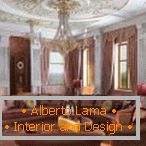



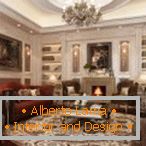
Kitchens
For finishing the kitchen floor in the style of classicism use a large tile, imitating wooden parquet. Tint select natural from a rich brown scale. The kitchen set also obeys the principles of symmetry and must have identical storage systems on either side of the "center" (usually slabs). The facades of furniture are decorated with stucco molding, decorative moldings, curbs and cornices, "pilasters" with gilding. In the kitchen, it is not recommended to use fabric wallpaper, so it is better to paint or glue the walls with a vinyl version that mimics the textile pattern (with "fibers"). The dining area is decorated with a light white table and the same "airy" chairs with mother of pearl upholstery made of silk.
See also: Empire style in the interior - history and modernity in design 


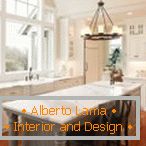

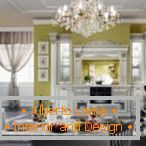
Bedrooms
The center of the bedroom is a bed, in the classicism it lost the canopy, which used to cover the sleeping people from the outside world. But on the luxurious upholstery, decorative pads and coverlets with a rich pattern can not save. If the dimensions of the bedroom allow, then the "female" half is equipped with a boudoir. In private houses, it is possible to allocate a small adjoining room for it. On both sides of the luxurious bed put two bedside tables, observing the rule of symmetry. At the foothills, you can install a canape or bench, upholstered in expensive silk. High, narrow windows drape with heavy curtains of light shades. Walls should be painted better, and an accent painting or tapestry should be placed at the head.

In neoclassicism, you can use furniture, upholstered in natural leather instead of cloth.


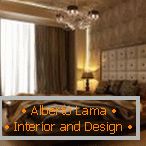

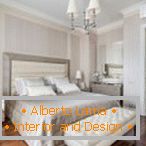
The bathroom
In the bathroom, walls and floors are tiled with ceramic tiles. In the experimental variants, the green palette and its gradations are taken as a basis for the palette of paints. The walls and the floor are given a soft olive color. The shell is placed in a tub of pistachio shade, decorated with silver or gold-plated moldings. On the wall hang an oval mirror in a simple frame. On either side of it, four pairs of sconces with two bulbs are installed. Decorative addition will be a painting: a floral ornament of white and green shades, which "hangs" above the mirror and ends at the level of sconces. The bath is selected with a classic shape on curved legs. Close it with curtains of pistachio color with unobtrusive ornament. To the interior does not look too "green" it is complemented by furniture made in combinations of dark brown and milky colors.
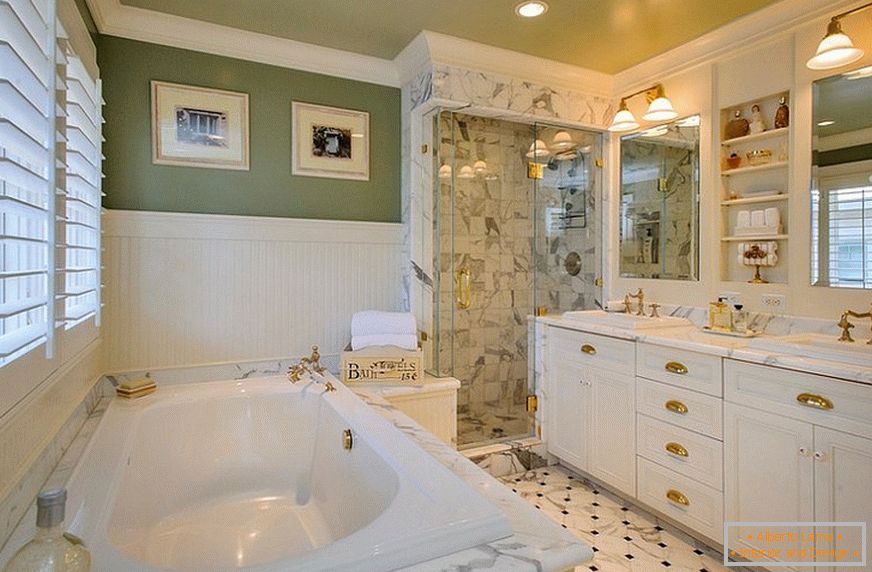

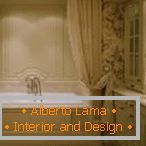

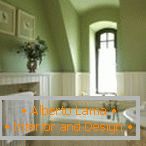

Study
Antique furniture will seamlessly enter the interior of the office. An old, heavy writing desk, desk, desk or secretary will give you comfort, convenience and beauty. Perform such furniture from a solid wood of dark tones. To the situation did not look too gloomy, for the draping of the walls use fabrics of light shades with a neutral pattern. A bulky armchair with leather upholstery will fit a bulky table. Required attribute cabinet - the library. If the size of the room allows, then it is allocated a separate "corner" with an ottoman and a table. Since the ceilings are high in the "palace" rooms, you can use large wardrobes with a mobile ladder that climbs to reach the highest shelves. The original addition will be a sconce on a mirror substrate, similar in shape to the candlesticks.



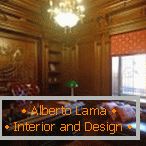


Conclusion
In the description of classicism there are references to painting, poetry, prose, music and sculpture. The direction in its time completely embraced the broad concept of "art" and left a trace in almost every niche. Most of the "remnants" of the style remained in excellent condition and has reached our days. In order to experience the "taste" of the direction, personally to see the atmosphere of the interiors, to appreciate its charm and impressiveness, you can visit the Russian Northern Palmyra, where most of the samples of Russian classicism are located - a separate branch of the style.


